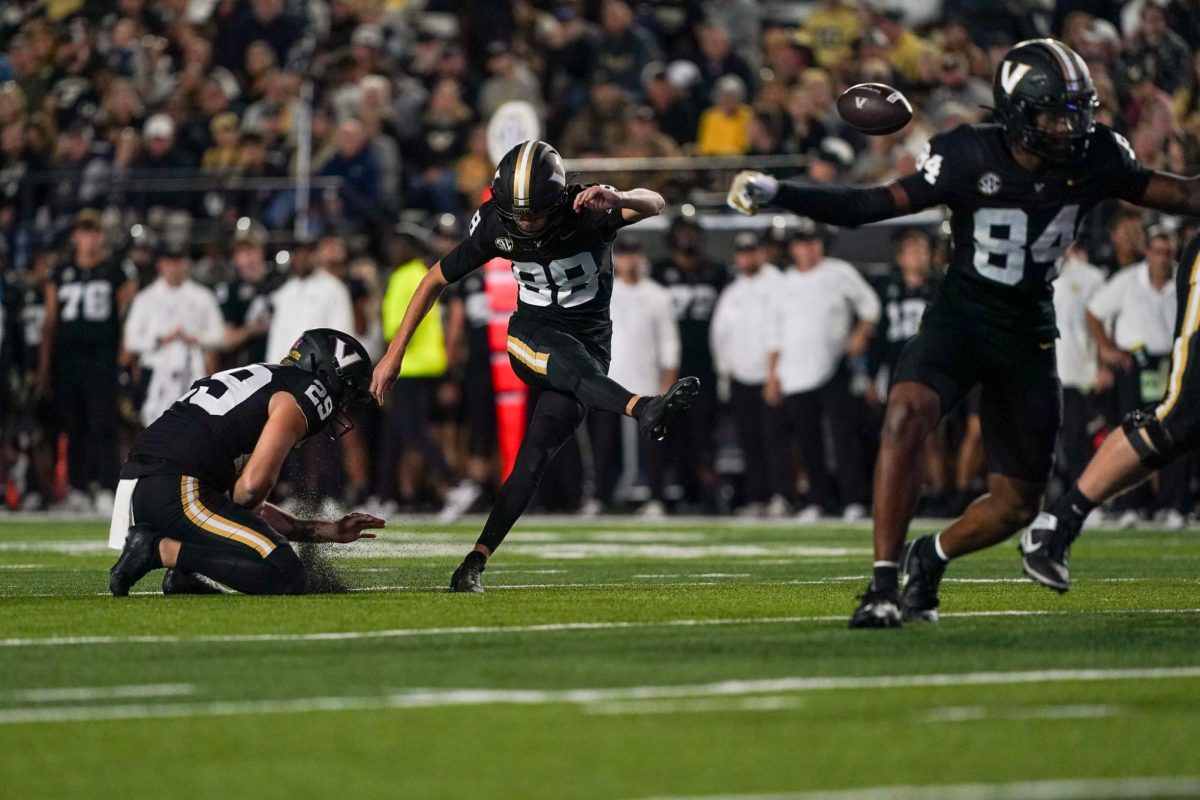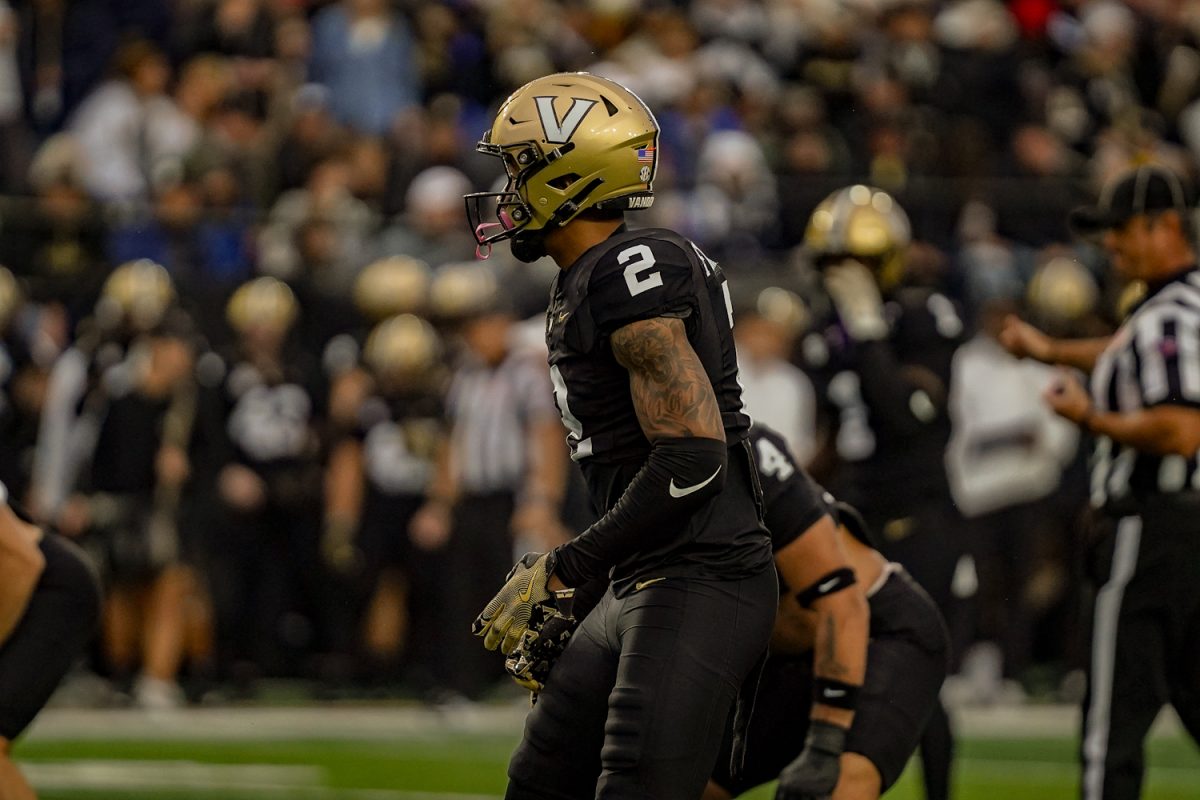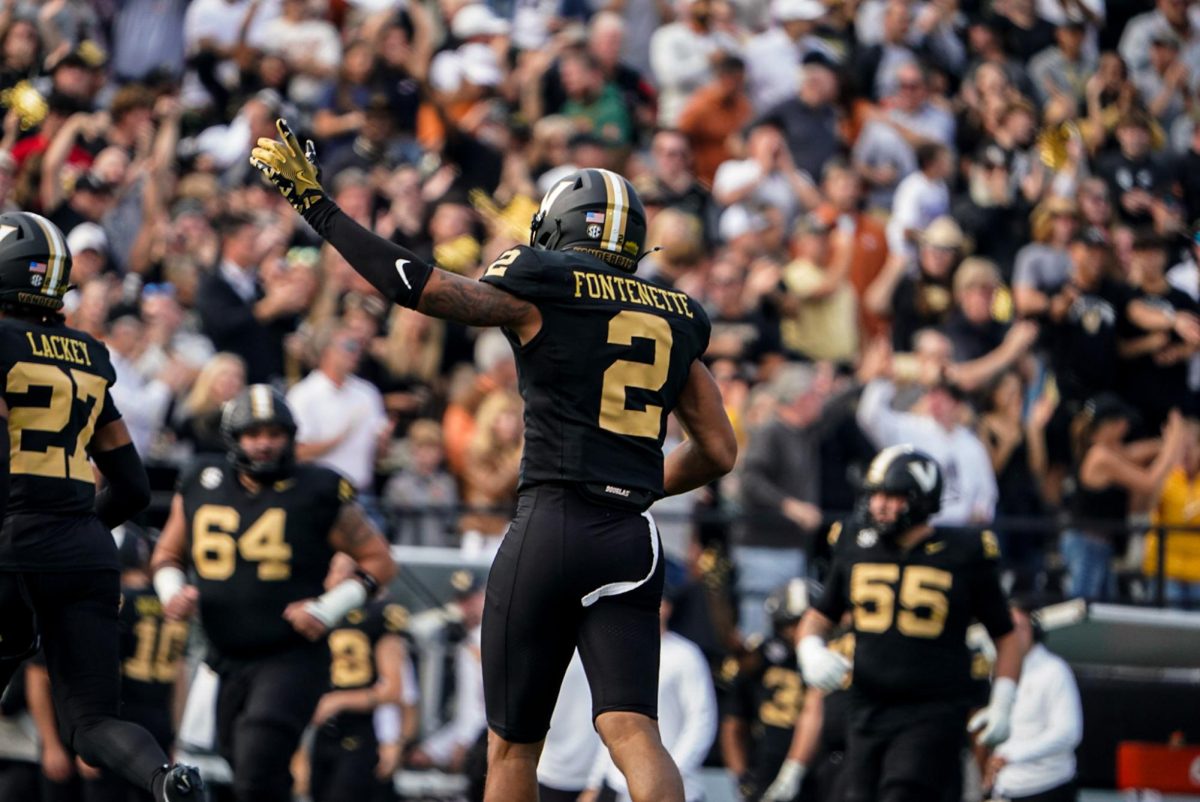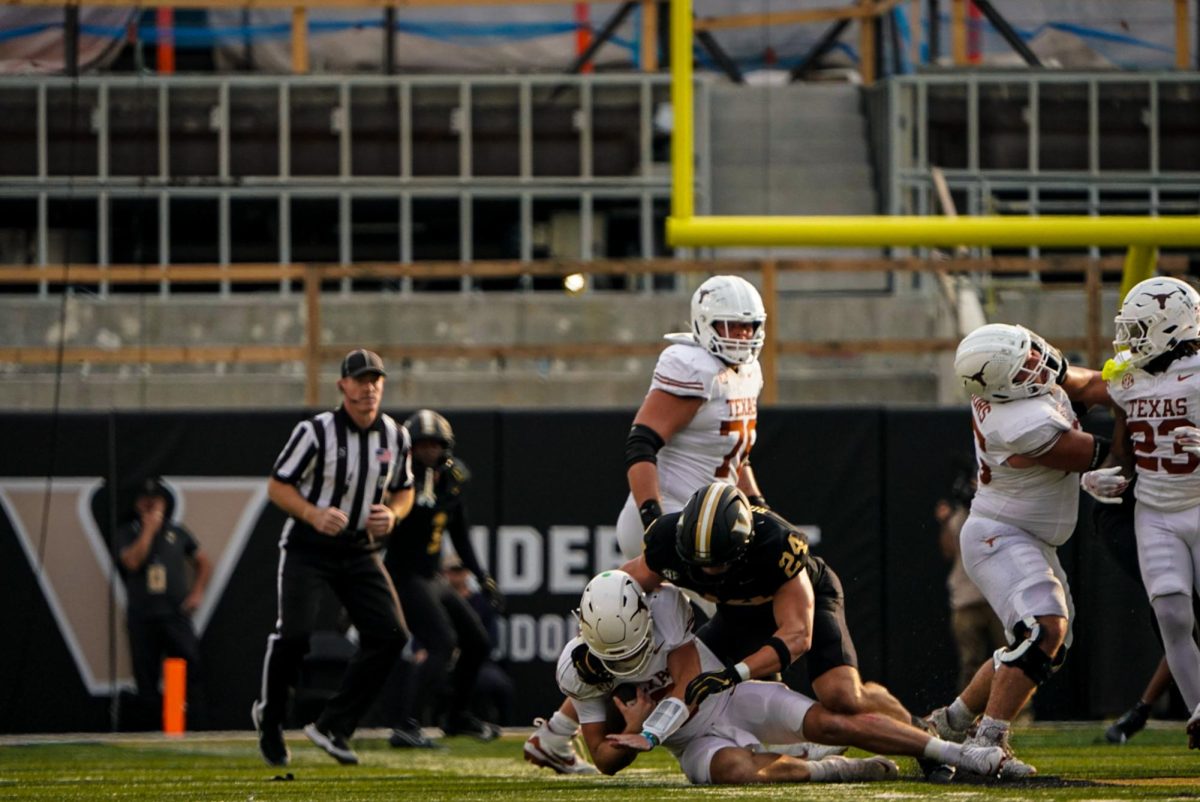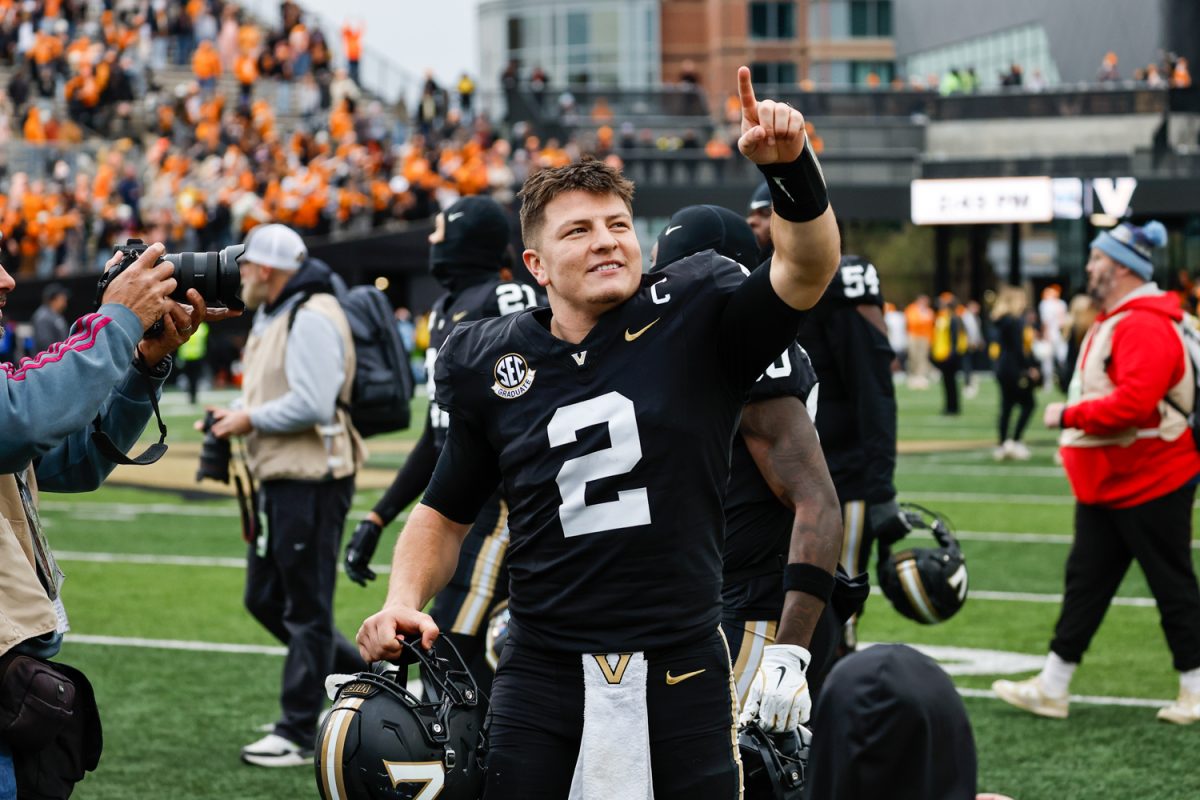The No. 25 Vanderbilt Commodores hope to take down yet another SEC heavyweight as it faces No. 5 Texas at home on Saturday. Last week, the AP Poll added Vanderbilt to its top 25 for the first time since 2013 after the ‘Dores won their third straight game. This also means that Saturday’s matchup against the Longhorns will be the first top-25 matchup at FirstBank stadium since 2008. Head coach Clark Lea and quarterback Diego Pavia have led the team to a high point, and the Commodores can climb even higher if they can put together another monumental effort as underdogs.
While the team’s performance against Ball State was far from perfect, Vanderbilt pulled away in the fourth quarter to ultimately win 24-14. Pavia still did plenty to ensure the victory, connecting with tight end Eli Stowers for a touchdown, rushing for another and setting kicker Brock Taylor up in range to make all three of his field goal attempts. The defense, meanwhile, stood stout throughout the night, holding Ball State to just 14 points — and none in the fourth quarter.
Lea seemed optimistic about the team’s form in his postgame interview.
“We got a couple of key stops defensively…we had a bunch of yards tonight [but] I thought we broke down in critical moments with some penalties,” Lea said. “We’ll take an ugly win.”
Vanderbilt will have to put forth a cleaner effort to win against a Texas team that’s coming off its first loss of the season. Here are three key areas the Commodores will need to focus on if they want to pull off the upset.
Vanderbilt’s Defensive line vs. Texas’ quarterbacks
Vanderbilt’s defense was overall effective against the Cardinals, but its defensive line itself has not put consistent pressure on opposing quarterbacks in recent weeks: The unit posted a single sack at Kentucky and only two in the wins against Alabama and Ball State.
The Longhorns pass the ball on just over 50% of their offensive plays — more than both of Vanderbilt’s previous two conference opponents. This means that the Commodores’ defensive line will have an increased opportunity to disrupt Texas’ air attack. Such a disruption could prove crucial in this matchup given Quinn Ewers’ shaky performances as of late, which left him benched in the Longhorns’ loss to Georgia last week in favor of redshirt freshman Arch Manning. If Vanderbilt’s defensive line can put pressure on whoever is under center next week, it could change the way the game unfolds.
Meanwhile, Texas’ run game was dismal last week, as it managed just 1.1 yards per rush against Georgia. Its offensive line did a poor job keeping opposing defenders out of the backfield, allowing 10 tackles for loss — including multiple early hits on quarterback rushing attempts. Georgia forced two fumbles from Ewers and one from Manning and recovered all of them. Vanderbilt has been middle-of-the-pack against the run this season, allowing 129 rushing yards per game thus far. It can again make a big impact on this game, however, by getting to the quarterback on runs and punching the ball out. A mistake-prone opponent should have Lea’s defenders ready to hunt for big plays.
Diego Pavia vs. Texas’ Secondary
Vanderbilt’s offensive success has mainly been attributed to Pavia. He’s put the team on his back through his improvisation in the running game, but how his passing game takes on Texas’ solid secondary is going to be critical this weekend. Last weekend against Ball State, Pavia threw for 275 yards, completing 55% of his passes. In every game this season, Pavia has connected with one of his targets for at least a 20-yard gain, showcasing that he’s always looking for deep passes.
Georgia’s Carson Beck only threw for 175 yards — including three interceptions and no touchdowns — against Texas last week. Georgia won through its run game, but if Pavia and Co. want to win as well, they will need to stay aggressive through the air. In the victory over Alabama, Pavia had his best game of the season, completing 80% of his passes for 252 yards. This game will need to be different, though. The Crimson Tide may have been ranked No. 1 in the AP poll, but it also ranked 42nd in opponent yards per game, a stat in which Texas currently leads the nation. Texas’ stout secondary will give Pavia his most formidable challenge yet, and their matchup could determine the game’s outcome.
Red Zone Rivalry
A strength for both the Commodores and the Longhorns has been how efficient their offenses are in scoring position. Vanderbilt has scored 28-of-29 red zone attempts, and Texas successfully converted 31-of-36 chances. The Commodores’ versatility allows them to be dangerous in this area: Pavia has frequently used his legs to carry the ball into the endzone if his favorite targets weren’t open, which won Vanderbilt the Ball State game. Running back Sedrick Alexander shined in the red zone against Alabama with two rushing touchdowns, while his backfield mate AJ Newberry converted a clutch receiving touchdown against Kentucky and a game-tying rushing touchdown against Missouri. The Black and Gold have the versatility to outplay Texas, and they’ll need to go deep into their bag of tricks to use these many options.
You can’t mention versatility without talking about Texas’ offense so far this season. The Longhorns aren’t converting as efficiently as the Commodores in the red zone, but their offense is exceptionally talented: they boast an impressive ten players with multiple rushing/receiving touchdowns. Wide receiver Isaiah Bond has been a reliable target through the air, as he already has 23 receptions for 380 yards. Running back Quintrevion Wisner has been their most effective back on the ground, averaging 5.5 yards per carry.
If either team wants an edge, they must be creative in the red zone.
Vanderbilt will take on Texas this Saturday, Oct. 26, at 3:15 p.m. CDT at FirstBank Stadium.

